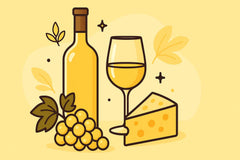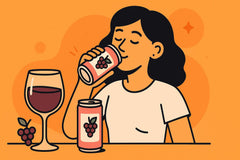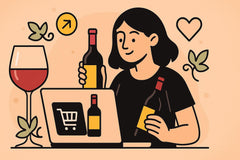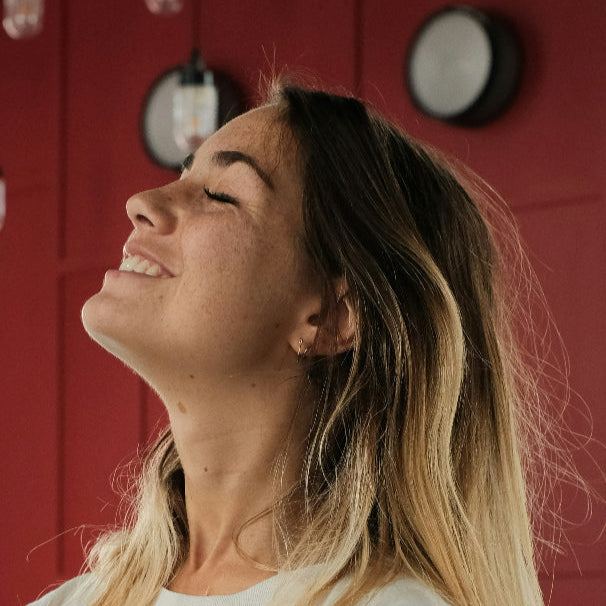Wine can be intimidating. Not because it’s inherently complicated, but because the culture around it often makes it feel like you need a sommelier certification just to pick a decent bottle. If you've ever stood in the wine aisle squinting at labels and wondering if “notes of blackberry and leather” is a good thing, you're not alone.
This guide is for anyone who’s ever wanted to feel more confident about choosing wine—whether you’re just starting out or you’ve been dabbling for a while and want to go deeper. We’re covering everything: the basics, how to figure out what you like, how to read labels without Googling every other word, and how to pick the right wine for the right moment. No snobbery, no jargon without explanation, and definitely no pressure to pretend you like something just because it’s expensive.
By the end of this, you’ll know how to choose a good wine that suits your taste, your budget, and the occasion. And maybe even impress a friend or two along the way.
Understanding the Basics of Wine
Wine is, at its core, fermented grape juice. But that simple definition doesn’t quite capture the centuries of tradition, regional nuance, and craftsmanship that go into every bottle. Wine has been part of human culture for over 8,000 years, with origins tracing back to ancient Georgia and Persia. Today, it’s made in nearly every corner of the world—from the rolling hills of Tuscany to the valleys of Napa.
There are five main types of wine:
- Red: Made from dark-skinned grapes, fermented with the skins to give it color and tannins.
- White: Typically made from green or yellow grapes, with skins removed before fermentation.
- Rosé: Somewhere between red and white, made by limiting skin contact or blending red and white wines.
- Sparkling: Carbonated wines like Champagne or Prosecco, known for their bubbles and celebratory vibe.
- Dessert: Sweet wines often served after meals, like Port or Sauternes.
You’ll also come across some common wine terms that are worth knowing:
- Tannins: Compounds from grape skins and seeds that create a drying sensation in your mouth. More tannins = more structure.
- Body: The weight or fullness of the wine in your mouth—light, medium, or full-bodied.
- Acidity: The tartness or crispness. High-acid wines feel refreshing and zippy.
- Finish: The lingering taste after you swallow. A long finish is often a sign of quality.
As for how wine is made, here’s the short version: grapes are harvested, crushed, fermented (with or without skins), aged (in barrels or tanks), and then bottled. The choices made at each step—grape variety, fermentation time, aging method—shape the final flavor.
Know Your Preferences: Discovering What You Like
The best wine in the world is the one you actually enjoy drinking. That’s not a cop-out—it’s the most important rule of wine. But figuring out what you like takes a little exploration.
Start by thinking about your taste preferences in general. Do you like sweet drinks, or do you lean toward bitter or dry flavors? Are you into bold, rich foods or lighter, more delicate ones? These preferences often translate into wine.
Some wines to try based on common taste profiles:
- Sweet: Moscato, Riesling (especially German or Washington State), Port
- Dry and light-bodied: Pinot Grigio, Sauvignon Blanc, Gamay (like Beaujolais)
- Full-bodied and bold: Cabernet Sauvignon, Syrah/Shiraz, Chardonnay (especially oaked)
One of the best ways to explore is by trying different varietals (grape types) and regions. A Pinot Noir from Oregon tastes different than one from Burgundy, France. That’s because of terroir—a French term that includes climate, soil, and geography. It’s why the same grape can produce wildly different wines depending on where it’s grown.
Keep track of what you like. Seriously. Use a wine journal or a wine app like Vivino to log your favorites and your not-so-favorites. Pay attention to tasting notes—do you like wines described as “fruity,” “earthy,” or “spicy”? Those words can guide your future picks.
If you have access to wine tastings or wine flights at restaurants, take advantage. It’s a low-commitment way to try several styles side by side. And don’t be afraid to ask questions—most people pouring wine love to talk about it.
Reading a Wine Label: What to Look For
Wine labels can be cryptic. Some look like they were designed to confuse you on purpose. But once you know what to look for, they start making more sense.
Here are the key elements to focus on:
- Producer: The winery or brand that made the wine.
- Vintage: The year the grapes were harvested. Weather that year can affect the wine’s quality and taste.
- Region: Where the grapes were grown. This can be as broad as a country or as specific as a vineyard.
- Varietal: The type of grape used (e.g., Merlot, Chardonnay).
- Alcohol content: Usually listed as a percentage. Higher alcohol often means a fuller body.
Labels vary depending on whether the wine is from the Old World (Europe) or the New World (everywhere else). Old World wines often list the region (e.g., Bordeaux, Rioja) rather than the grape. New World wines usually put the varietal front and center.
You might also see certifications like AOC (France) or DOC (Italy), which indicate the wine meets certain regional standards. Organic and biodynamic labels are becoming more common too—these refer to how the grapes are grown and the wine is produced.
Quality indicators can be subtle. Look for specific vineyard names, smaller production numbers, or terms like “estate bottled.” These often suggest more care went into the wine.
Wine by Occasion: Choosing the Right Wine for the Right Moment
Not every bottle needs to be a showstopper. Sometimes you just want something easy to sip on a Tuesday night. Other times, you’re toasting a milestone. Matching the wine to the occasion makes the experience better.
For everyday drinking, go for versatile, food-friendly wines like Pinot Noir, Sauvignon Blanc, or Côtes du Rhône. These tend to be crowd-pleasers and won’t break the bank.
When it comes to food pairing, the classic rule is: red with meat, white with fish. But that’s a starting point, not a law. What matters more is matching intensity. Rich dishes go well with full-bodied wines; delicate dishes pair better with lighter wines.
Think about the season too. Crisp whites and rosés shine in summer. Hearty reds feel right in winter. Sparkling wines? They’re not just for New Year’s—they’re great with salty snacks or fried foods.
If you’re gifting wine, consider the recipient’s taste. A safe bet is a mid-range bottle from a well-known region—like a Rioja Reserva or a Napa Valley Chardonnay. Or go with a sparkling wine; it feels celebratory even if you don’t know their preferences.
Budgeting for Wine: Price vs. Quality
Price doesn’t always equal quality. Some $15 wines are better than $50 ones. What you’re often paying for is branding, rarity, or aging—not necessarily better taste.
That said, there are reasons some wines cost more: smaller production, hand-harvested grapes, oak aging, or prestigious regions. But if you’re just starting out, you don’t need to spend a fortune.
Look for value regions—places that make great wine but aren’t as hyped. Think Portugal, Chile, South Africa, or lesser-known parts of France like the Languedoc.
Local wine shops often have knowledgeable staff who can recommend hidden gems. Online retailers like Wine.com or curated wine clubs can also help you discover good bottles at fair prices.
Exploring Wine Regions and Grape Varietals
Wine is a passport in a bottle. Each region brings something unique to the table.
Some major wine-producing countries to know:
- France: Bordeaux, Burgundy, Champagne, Rhône
- Italy: Tuscany, Piedmont, Veneto
- Spain: Rioja, Ribera del Duero, Priorat
- USA: Napa Valley, Sonoma, Willamette Valley
- Australia: Barossa Valley, Margaret River
- Argentina: Mendoza (especially for Malbec)
As for grapes, here are a few to get familiar with:
- Cabernet Sauvignon: Bold, tannic, often aged in oak. Think blackcurrant, cedar, and spice.
- Pinot Noir: Light-bodied, earthy, and complex. Great with food.
- Chardonnay: Can be buttery and oaky or crisp and mineral, depending on style.
- Sauvignon Blanc: Zesty, grassy, and citrusy. Refreshing and easy to love.
- Syrah/Shiraz: Spicy, dark-fruited, and powerful.
Terroir—the environment where grapes are grown—affects everything from flavor to aroma. A Chardonnay from Chablis tastes nothing like one from California. Exploring different regions is one of the most rewarding parts of wine.
Common Mistakes to Avoid When Choosing Wine
Everyone makes missteps. Here are a few to watch out for:
Don’t assume a higher price means better wine. Don’t pick a bottle just because the label looks fancy. And don’t ignore your own taste just because a wine is trendy.
Food pairings matter more than you think. A great wine can taste off if it clashes with your meal. And if you’re unsure, ask for help. Wine pros exist for a reason.
Tips for Buying Wine with Confidence
The best way to get better at choosing wine is to stay curious. Ask questions at wine shops or restaurants. Most staff are happy to help and love sharing their knowledge.
Use wine apps to scan labels and read reviews. Join a wine club or subscription service that sends curated selections—many include tasting notes and food pairings.
And if you find a wine you love, buy a couple of bottles. Building a small home collection means you’ll always have something on hand for dinner or a last-minute gift.
Keep Exploring, Keep Sipping
Wine doesn’t have to be complicated. It’s about enjoyment, discovery, and maybe a little storytelling. The more you explore, the more you’ll learn what you like—and that’s what matters most.
Whether you’re sipping a crisp white on your porch or uncorking a bold red for a dinner party, the right wine is the one that fits the moment. So try new things, trust your palate, and don’t be afraid to ask questions. Wine is a journey, and every bottle is a new chapter.
Frequently Asked Questions
How long does wine last after opening?
Most wines last 3–5 days once opened. Sparkling wines lose their fizz faster (1–2 days), while fortified wines like Port can last weeks.
What’s the best way to store wine?
Keep it in a cool, dark place with a consistent temperature. Store bottles on their side if they have corks to keep them moist.
Is expensive wine always better?
Not necessarily. Many affordable wines are excellent. Price often reflects branding, aging, or rarity—not just taste.
Can I pair red wine with fish or white wine with steak?
Yes. It’s more about the preparation and sauce than the protein. A light red like Pinot Noir can work with salmon, and a rich white like oaked Chardonnay can stand up to steak.







